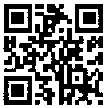I've always liked making materials for classes but kind of got out of the habit with so many digital resources to play with.
My number one preference with younger learners is Wordwall, as I can easily import class sets from Quizlet (been using that site for over 20 years) from resources previously compiled - be it text book lexical sets or glossaries from readers. The twist with Wordwall is that any images offered will not be the same as Quizlet = students do not just memorise the pictures. Once made, any one set can be used in a variety of different game options, and also be printed out as worksheets.
However, screen time can be overdone and younger learners need "hand time" as well - feels like something new & different.
 |
| Two halves of the 'gap fill' |
To encourage question asking - and a follow up - as well as requiring students to actually listen to the reply and 'do something', this pair work exchange is easy to prepare and engaged students from start to finish. Target language was vocabulary items (classroom/school bag objects + colours)..."What is it?" (pointing at a blank square) then "What colour is it? Listener draws the item in the colour, and labels their picture (book open to spell OK if necessary). To fill up the grid I also added students' names = draw portraits of each other.
Only 'banned' item = erasers, to stop this turning into an art class!
This worked one-on-one with "can do" kids...in teams when the group needed a bit of peer-support = added bonus of "your turn" etc classroom language.
 |
| Exercise complete |
Students themselves decided to label their pictures, which was an added bonus to plenty of speaking/listening, with teacher gently making sure good intonation/full answers, and not too much time spent drawing (a relief to the less artistically gifted like me!)
This suited reviewing 2 units of vocaulary from OUP's Everybody Up 1
The second activity, to also review the same content...downloaded & printed the picture dictionary from
https://elt.oup.com/student/everybodyup for the relevant units (Although from 3rd Ed, matches 2nd. Ed content)
 |
| Four-in-a-row template |
Then a scissors & glue job (could also be a digital effort with excel I know, but this was quicker for me!) to fit onto a Mark Hancock game template of old. Can be played 1 v 1, or two teams; both worked equally well, and generated a lot of chatter. Quite a lot L1, but that was totally focussed to game play strategy/winning, with team mates (which was beyond my young learners in English)...whilst at the same time they were code-switching to read the vocabulary/name the pictures or ask each other "What is it?" & "What colour is it?"...because they really wanted to. When a drill is not a drill :)
Play? Roll the dice & choose a word from that box. Aim = 4-in-a-row. First past the post or fill the whole board, depending on time etc. Use - two different colour pencils. Use one board for each pair/team to share, or just one board to get passed backwards & forwards - I decided against this option as I realised half the class was always looking at the words upside-down.
Teacher? Sit back and enjoy the reading/speaking/writing magic :)
The template I made on the right - obviously colour needed for colours, but b/w will usually work nicely as the artwork is clear/matches the text book.
 |
| Game over! |
The finished (yeah, messy!) Books open? If necessary...I prefer a sneaky peak only if "stuck". It worked out that teams helped each other or not very 'sotto voce' giving the game away if they knew the word first eg "Oh no, pencil!"
Easily replicated for any review a language teacher can think of!










